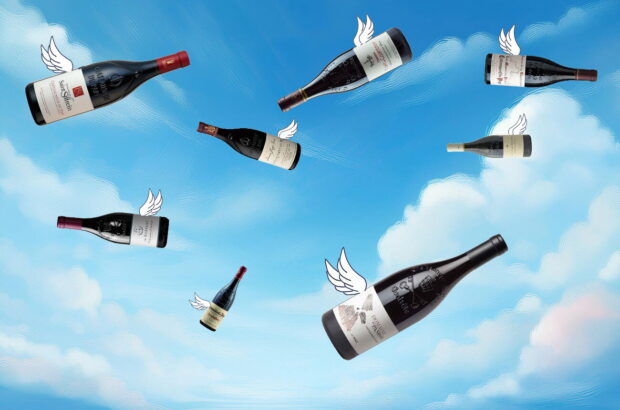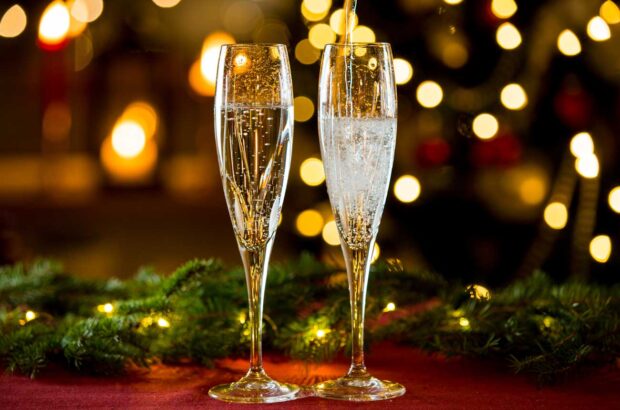The Southern Rhône’s seductive 2007 vintage has been rapturously received, with merchants trumpeting its wares. The wines are good, but do they have the structure to age, asks JOHN LIVINGSTONE-LEARMONTH
Two voices talk to me about the 2007 vintage in the Southern Rhône, both rooted in the English Civil War. One is a Cavalier (the Royalists, lovers of good times), the other is a
Roundhead (Oliver Cromwell and Parliament: Puritan austerity).
On the surface, this vintage is an extraordinarily seductive one. The red wines display
bountiful fruit, are sweet and groovy, and have come forward very early. The tannins are fine, soft at times, barely noticeable. Bouquets swirl with simmered, even mulled, fruits, and there are tastes of sweet fruit, lozenges and jam, with occasionally a late lift of
freshness on the finish.
Digging deeper, experience tells me there are two issues with the structure of some of these cover-girl wines. First, the tannins: I wonder for how long they will live and retain their poise after this first exuberant flourish.
Acidity levels are certainly low. Second, the sugar levels: there are wines with lurking amounts of residual sugar that do not lend them a veritable balance. I was tasting still-fermenting wines as late as November 2008 at Gigondas, and July 2008 at Châteauneuf.
Both issues point to complications ahead. Perhaps the Cavalier should prevail – why worry? Just drink them back and enjoy them.
But the historian voice summons me: ‘Is this a very good or a great vintage? Can it be on a par with 1978, 1990, 1998, 2005?’
Flashing through my mind in terms of style are vintages such as 1985 and 1990: fruit-forward years but, in both cases, the sunshine hours were greater and more evenly spread through the summer.
The pattern of ripening – late, fast, often with wind to the fore – brought risks. ‘The bunches were very tight, and if we had had any early September rain, it would have been a disaster. As it was, there was some healthy Mistral wind,’ recalls Jean Lançon of Domaine de la Solitude at Châteauneuf.
‘You had to wait in 2007, past 15°C, to get the tannins ripe,’ affirms Vincent Avril of Clos des Papes. ‘Going from 14.5°C to 15.3°C made the difference.’
Sense of style
On the matter of vintage comparisons, André Brunel of Les Cailloux at Châteauneuf confirms that 2007 is a low acidity year. ‘The 2007s have closed a little and may gain some tannin and chewiness,’ he says.
‘There is certainly less tannin than 2005. At first, we thought it was like 1990, but it won’t keep as long as that – the acidity is low.’
Wines containing the late-ripening Mourvèdre have benefited from the welcome extra structure. Marc Perrin of Château de Beaucastel, where Mourvèdre accounts for 30% of the wine, declares, ‘In 2007, you need Mourvèdre and Syrah to lower the alcohol and provide backbone, tannins and freshness.
Our Mourvèdre was exceptional: very integrated, ripe tannins but present ones. The Grenache-only wines are so rich and round that they can be too heavy.’ The quiet voice of the Roundhead there.
Thus it comes down to a question of style. A later-ripening appellation, such as Gigondas, has done really well, since the wines appear to hold a good tannic structure and thus a well-set balance. They are wines of good ageing potential, but, most importantly, they will have the chance to develop an array of nuances and variety.
At Châteauneuf-du-Pape, the two styles – the grass-roots Tradition wines, and the swish, expensive Prestige wines – mean a divergence from the word go. The Tradition wines are all well behaved but they can lack real scope and mystery.
They are rich, and glide along well, though the end palate can fail to build on the imposing sweet fruit start. The best have a freshness on the finish.
The Prestige wines are up a notch or two; more dense, more long lived. The Grenache shows up well, but if the grower went for full-on extraction, the risk is of too heady and overpowering a wine.
Those with oak are far away from the more simple, vat-raised, mainly Grenache wines – black fruit and charcoal flavours versus red fruit or plum sweetness.
It would also be great to find more oldvine Grenache of finesse.
Top examples are Domaine de Marcoux Vieilles Vignes, Les Cailloux Cuvée Centenaire and Clos du Mont-Olivet’s Cuvée du Papet – all wonderfully elegant.
Star performers
At Vacqueyras, growers find the year charming. Leading domaines, such as Clos des Cazaux and Château de Montmirail, both found the reds not easy to vinify – notably in completing their fermentations.
‘Gigondas was easier for us than Vacqueyras, where some of my vats still had 15 grammes of sugar to complete in June 2008,’ says Philippe Archimbaud of the latter domaine. As with many 2007s, these are wines offering early drinking and plenty of unaffected enjoyment.
Lirac is an appellation that lacks true local identity; the 2007s often reflect the cellar rule book: leave the fruit to become nearly overripe, extract it, give it oak, off it goes.
The best wines have a welcome poise, and the presence of the Syrah – half the Dame Rousse cuvée – at Domaine de la Mordorée was certainly a big help. Textures are sweet and liqueur connotations present.
Elsewhere among the big names, Beaumes de Venise has performed well, supple wines for earlier drinking. Provided growers waited for full tannic ripeness, Vinsobres has also done well – lots of body in the best wines, with a clear profile.
The Côtes du Rhône Villages suggest great success in 2007: with terroir in second place behind the vintage imprint, this is a chance for switched-on growers to offer well-fruited wines that offer fun drinking.
The same remark applies to the Côtes du Rhônes, with local domaines doing well, provided their owners were patient with the ripening of the crop.
So, 2007 Southern Rhône is very good, sweet ’n’ easy – what the French term vins
de plaisir.
Cavaliers on top. Just remember who won the Civil War…
Written by John Livingstone-Learmonth






